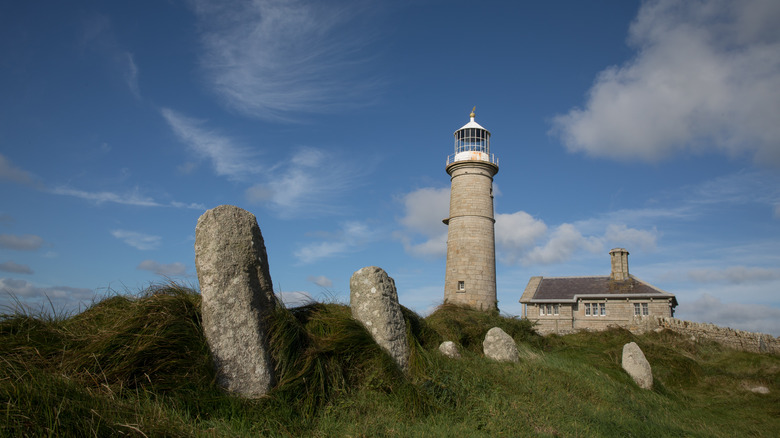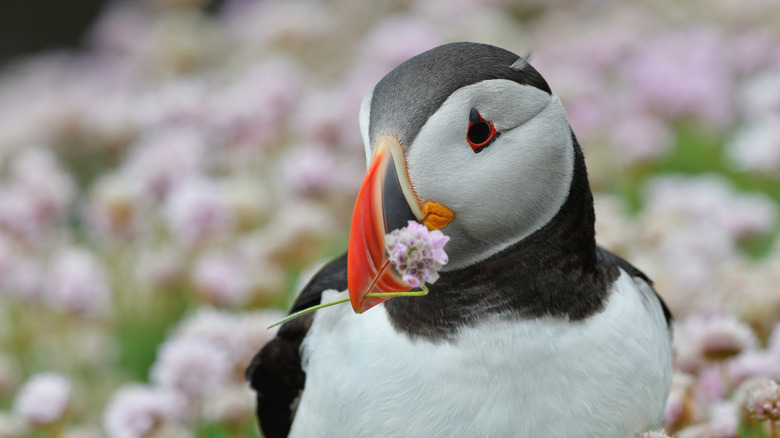When you think of a vacation in England, London obviously comes to mind. You may think of York in the north, the home of the Beatles in Liverpool, or the Roman ruins in Bath. A place you might not consider is Lundy. If you haven’t heard of it, listen up. Lundy is a small island in the Bristol Channel between England and Wales and is technically part of Devon. It’s a mere 3.5 miles long and half a mile wide, but despite its diminutive size, Lundy is packed solid with things to do, history to explore, and wildlife to learn about, both on land and in the sea. There are shipwrecks to dive and historic places to stay, like a 13th-century castle. It’s also home to the adorable puffins that give the island its name. In fact, we refer to this place as “Lundy” and not “Lundy Island” because the Norse word for the place actually means “puffin island,” so it’s implied.
There are wonderful hikes to take and a tavern in the town center that has been around since the middle of the 19th century. If you want to practice your rock climbing skills, there are several rock faces for you to check out. Here’s all the info on Lundy, how to get there, and what to do in this beautiful and historic place.
A trip to the past

Lundy, which is owned by the National Trust and managed by the Landmark Trust, has had inhabitants for 3,000 years, and there are ruins from Bronze and Iron Age settlements and the Vikings. Later on, there were a number of pirates and smugglers who sometimes docked there. On the island, you’ll find a Victorian church, a lighthouse, ruins of two WWII German Heinkel He 111 bombers that crashed there, and a castle built by King Henry III in 1250.
You can stay in the cottages in that castle’s courtyard, as well as the lighthouse keeper’s store, or the Lundy Vestry from 1896. At the time of this writing, a four-night stay on the island ranges from $207 to $659. In keeping with the historical theme, the 1860s Marisco Tavern in the middle of town never closes and keeps its lights on when the island generator shuts down for the evening. It’s where residents and guests gather for news, a pint, and some food. You can see old Georgian cannons, the remains of a Victorian quarry, and a cave that was once used to hold prisoners as you hike around the island.
If you’ve got kids with you, there is a really cool way to explore Lundy. You can participate in a scavenger hunt for “Lundy letterboxes,” which are hidden around the island with unique rubber stamps to collect, including the “Lundy Bunny” stamp, the location of which moves around. You can get all the info, clues, and a rental compass at the Marisco Tavern.
The natural world and getting to Lundy

For a more structured tour of Lundy, the official events page has a number of guided walks, snorkeling safaris, and rock pool rambles with the little ones. You can take the MS Oldenburg from Bideford or Ilfracombe to the island on one of three sailings per week. Day trippers will have around four to six hours to explore, depending on daylight and conditions. For the 2024 and 2025 summer seasons, roundtrip tickets for adults cost $118, with reduced rates for kids. The trip takes less than two hours and does not run throughout the winter. Instead, during that time, there is a helicopter from Hartland Point twice a week.
Rock climbers can explore over 60 rock faces, including Devil’s Slide, the most popular. If you’re into fishing, you can do so anywhere but the East Coast, which is a no-take zone. Birders and lovers of cute things will adore the puffins that live here, but you’ll also see water rails, flycatchers, warblers, wagtails, kestrels, and more. On land, you may see the Sika deer, Soay sheep, rabbits, feral goats, a small herd of Lundy ponies, and farm animals like Highland cows.
There are several shipwrecks to dive, though some require a license. To prepare, here are some tips for more effective, low-risk scuba diving. There is even a lot to see when snorkeling, like grey seals, which are famous for being friendly to people in the water here, basking sharks (that eat plankton), wrasse, blennies, and gobies, as well as whales, jellyfish of several varieties, and dolphins.

